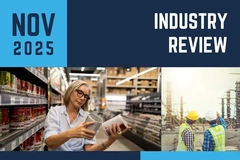
- Industry news
Industry news
- Category news
- Reports
- Key trends
- Multimedia
Multimedia
- Journal
- Events
- Suppliers
Suppliers
- Home
- Industry news
Industry news
- Category news
- Reports
- Key trends
- Multimedia
Multimedia
- Events
- Suppliers
Suppliers
US consortium reveals significant operational expenses resulting from plastic contamination in composting

01 Mar 2024 --- The Composting Consortium, spearheaded by the Center for the Circular Economy at Closed Loop Partners, has revealed insights into the state of compost contamination across composting facilities in the US. Paula Luu, senior project director at the Center for the Circular Economy, tells Packaging Insights that, on average, 21% of composter operating costs are dedicated to contamination mitigation.
The study engaged with ten US composters of varying sizes and business models. Luu emphasizes that the cost of contamination removal per ton varies widely based on factors such as facility capacity, staff size, available equipment and feedstock sources.
The report highlights the labor-intensive nature of contamination removal, with seven out of ten composters citing labor as the leading cost driver. Moreover, it underscores the increased cost associated with processing post-consumer and mixed organic streams compared to yard waste-only streams.
“Multiple strategies are needed to address systemic challenges, and labeling and design of compostable packaging is no different. Last year, the Composting Consortium released a report that unpacks effective design and labeling techniques to improve the likelihood of properly diverting food-contact compostable packaging to the appropriate material stream,” says Luu.
“More consistent and standardized compostable packaging design and labeling are critical to ensure that certified, food-contact packaging is properly sorted and recovered at the end of life. Similarly, non-compostable packaging should be distinct in its design and labeling to reduce the risk of conventional plastic packaging making its way into the organics stream.”
Certification against contamination
The report, titled “Don’t Spoil the Soil: The Challenge of Contamination at Composting Sites,” sheds light on the pervasive issue of contamination and its impact on the industry.
Addressing the issue of contamination requires a multifaceted approach. Key recommendations of the consortium include designing compostable packaging with clear and prominent indicators of compostability, disallowing the use of terms like “biodegradable” and educating consumers on proper disposal methods.
The goal is to ensure that certified compostable packaging is sorted correctly and recovered at the end of its life cycle while reducing the risk of non-compostable packaging contaminating the organic stream.
 Consistent and standardized compostable packaging design and labeling are critical to ensure that certified, food-contact packaging is properly sorted and recovered at the end of life.The study findings come at a pivotal moment for the composting industry as the world grapples with a growing food waste crisis.
Consistent and standardized compostable packaging design and labeling are critical to ensure that certified, food-contact packaging is properly sorted and recovered at the end of life.The study findings come at a pivotal moment for the composting industry as the world grapples with a growing food waste crisis.
The coalition details that currently in the US, nearly 40% of food is wasted and sent to landfills, representing a loss of US$430 billion. Despite efforts to increase organics collection and infrastructure, only about 4% of post-consumer food waste is sent to composters.
Plastic primary contaminant
The study delves into the intricacies of contamination within composting operations, assessing its impact on finances and challenging prevalent assumptions. It examines five commonly held assumptions about contamination and compostable packaging, breaking down in-field realities.
The consortium underscores the dominance of conventional plastic as the primary contaminant, comprising an average of 85% of the contamination encountered by composters in terms of volume.
Findings indicate that approximately 40% of composters in the study discovered trace amounts of conventional flexible plastic in their finished compost, highlighting the resilience of plastic within composting systems.
Recently, a consumer behavior trial by Compostable Coalition UK in Medway, witnessed a five-fold surge in consumers correctly disposing of compostable packaging in food waste bins. With clear communication and labeling, consumers could identify and dispose of compostable packaging correctly. The initiative also decreased contamination levels within these bins by the end of the trial period.
By Radhika Sikaria










